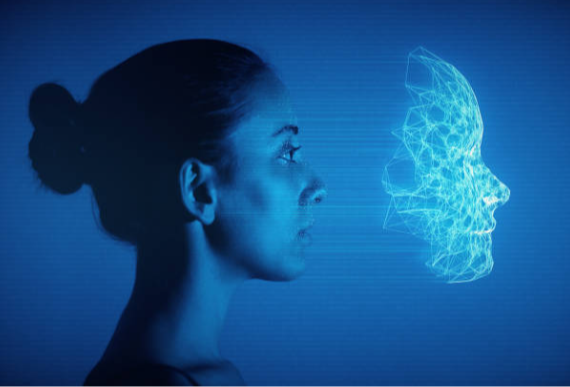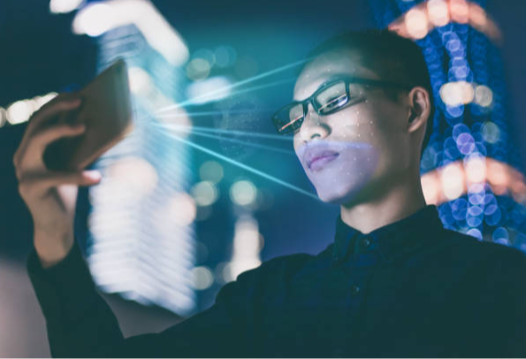
How to Find Your Leaked and Republished Photos on the Internet? What is a Face Recognition Search Engine?
Nowadays photos can easily be leaked and republished without your consent, leading to potential privacy breaches and unauthorized usage. Whether you're an individual concerned about personal privacy or a professional protecting your intellectual property, finding your photos on the internet is a crucial task. This is where face recognition search engines come into play. These advanced tools utilize sophisticated algorithms to identify and track images across the web, providing an efficient way to locate your photos online. In this blog post, we'll explore how to find your leaked and republished photos on the internet and delve into the workings of face recognition search engines, helping you take control of your digital footprint.
What is a face recognition search engine?

A face recognition search engine is a specialized type of search tool designed to identify and match human faces within a database of images or videos. This technology leverages advanced algorithms and artificial intelligence to analyze facial features and characteristics, such as the distance between the eyes, the shape of the nose, and the contours of the cheekbones. By converting these features into a unique digital signature or template, the system can quickly compare and match faces across large datasets.
These search engines are utilized in a variety of applications, ranging from security and surveillance to social media and personal photo organization. In security settings, face recognition can help identify individuals of interest, such as suspects or missing persons, by scanning footage from surveillance cameras and matching it against a database. On social media platforms, this technology enables features like automatic tagging of friends in photos.
The process typically begins with the detection phase, where the system identifies and isolates faces within an image or video frame. Following this, the recognition phase involves extracting facial features and creating a unique profile for each face. Finally, the matching phase compares these profiles against a database to find possible matches.
As face recognition technology continues to evolve, it is increasingly incorporating elements like deep learning and neural networks to enhance accuracy and efficiency.
How does face recognition search engine work?
A face recognition search engine operates by employing advanced technologies to detect, analyze, and match human faces within images or videos. The process is typically divided into several key stages: detection, extraction, and matching.
Detection. The first step involves detecting faces within an image or video frame. The system scans the visual input to identify regions that contain human faces. This is often achieved using algorithms that can distinguish facial features from other objects in the background.
Extraction. Once a face is detected, the next step is to extract unique facial features. This involves analyzing various aspects of the face, such as the distance between the eyes, the shape of the nose, the position of the cheekbones, and other distinct characteristics. These features are then converted into a numerical representation known as a facial template or faceprint. This template is a compact and unique digital summary of the face's key features.
Matching. The final stage involves matching the extracted facial template against a database of stored templates. The system compares the new faceprint with those in the database to find the closest matches. Advanced algorithms and machine learning techniques are used to ensure high accuracy and efficiency in the matching process.
Face recognition search engines are used in various applications. In security and law enforcement, they can help identify suspects or locate missing persons by matching faces captured in surveillance footage against a database of known individuals. In consumer applications, such as social media and photo management, these systems can automatically tag and organize photos based on the recognized faces.
The effectiveness of face recognition search engines relies on the quality of the algorithms and the data they are trained on. Modern systems often use deep learning and neural networks to improve their ability to recognize faces under different conditions, such as varying lighting and angles.
How to Find my Photos on the Internet?

Finding your photos on the internet can be done through various methods and tools designed for image search and recognition. Here are some effective ways to locate your photos online:
Google Reverse Image Search. One of the most popular tools for finding photos is Google’s reverse image search. You can access this by going to Google Images and clicking on the camera icon in the search bar. You can then upload a photo from your device or paste the URL of an image. Google will then search the web for matching or similar images, providing you with a list of websites where your photo appears.
TinEye. TinEye is another reverse image search engine that specializes in finding images online. Like Google’s tool, you can upload an image or enter its URL. TinEye will then scan the web and return results showing where the image is used. It also offers options to filter search results by image size, newest, or oldest appearance.
Social Media Platforms. Many social media platforms have built-in tools for finding images. For example, Facebook allows you to search for photos using keywords, and some platforms offer image recognition features that can help you find photos of yourself or others.
Specialized Search Engines. There are specialized search engines and tools that focus on specific types of images or specific platforms. Services like ImageRaider can monitor the web for images and notify you if your photos appear on new websites.
Tips for Effective Searches
Finding your photos online using face recognition search engines can be incredibly useful, but to maximize your chances of success, you need to employ some effective strategies. Here are several tips to enhance your search results:
Use High-Quality Images
The quality of the image you upload significantly impacts the accuracy of the search results. Higher resolution images contain more detail, making it easier for the search engine to recognize and match facial features. Ensure the photo is clear, well-lit, and free of obstructions like sunglasses or hats that might obscure your face.
Experiment with Different Angles and Expressions
Face recognition technology can be sensitive to the angle and expression in a photo. Uploading multiple images of yourself from different angles and with various expressions can improve the chances of finding matches. This approach helps the search engine gather a more comprehensive set of data points about your facial features, enhancing the likelihood of accurate results.
Use Multiple Search Engines
Not all face recognition search engines operate the same way or have access to the same databases. To get the most thorough results, use several different search engines. Google Reverse Image Search, PimEyes, and Betaface each have unique algorithms and sources of information. By leveraging multiple tools, you increase the breadth and depth of your search, catching potential matches that might be missed by relying on a single engine.
Optimize Image Format and Size
Certain formats and sizes might be more compatible with different search engines. JPEG is a commonly accepted format, but if the engine supports other formats like PNG or TIFF, experimenting with these can sometimes yield better results. Additionally, while high resolution is generally better, extremely large file sizes might slow down the search process or even be rejected by some engines. Ensure your images are of sufficient quality without being excessively large.
Refine Search Terms and Filters
Some face recognition search engines allow you to input additional details or use filters to narrow down the search. Utilize any available options to refine your search criteria. For example, you might be able to specify a date range, geographic location, or other contextual information that can help zero in on the most relevant results.
Regularly Update and Repeat Searches
The internet is constantly evolving, with new content being uploaded daily. What might not yield results today could be successful in a week or month. Regularly updating and repeating your searches ensures that you catch new occurrences of your photos being posted online. Set a schedule to perform these searches periodically to stay on top of any new developments.
Analyze and Validate Results
When you receive search results, take the time to analyze and validate them carefully. Not every result will be accurate, as face recognition technology can sometimes produce false positives or negatives. Examine the context and details of each match to determine whether the image is indeed of you. This step is crucial in ensuring that you address legitimate instances of your photo appearing online while ignoring irrelevant ones.
What to Do If You Find Your Photos Online

Discovering your photos online can be both surprising and concerning, especially if they were used without your consent. Here are some steps you can take to address the situation:
Assess the Context and Source
Before taking any action, assess the context in which your photo is being used. Determine whether it is on a social media platform, a commercial website, or a personal blog. Understanding the nature of the usage can help you decide the appropriate course of action. Additionally, identify the source or owner of the website or platform where your photo appears.
Contact the Website Owner or Administrator
Once you have identified where your photo is being used, reach out to the website owner or administrator. Most websites have a contact page or an email address for inquiries. Politely explain that your photo is being used without your permission and request its removal. Provide specific details, such as the URL of the page where your photo is displayed, to make it easier for them to locate and address the issue.
Utilize Social Media Reporting Tools
If your photo is found on a social media platform, take advantage of the platform's reporting tools. Most social media sites, such as Facebook, Instagram, and Twitter, have mechanisms for reporting unauthorized use of photos. Navigate to the relevant section of the platform, select the reason for your report, and follow the steps provided to submit your complaint. Social media platforms usually have policies in place to address such issues and will often remove the content if it violates their guidelines.
Send a DMCA Takedown Notice
For more serious cases, especially involving commercial websites, consider sending a Digital Millennium Copyright Act (DMCA) takedown notice. This legal document requires the website to remove copyrighted material upon request. You can find templates for DMCA takedown notices online, or seek legal assistance to draft one. Ensure that you include all necessary information, such as your contact details, a description of the infringing content, and a statement affirming your ownership of the photo.
Seek Legal Advice
If the unauthorized use of your photo is causing significant harm or if the website owner refuses to comply with your removal request, it might be necessary to seek legal advice. Consult with a lawyer who specializes in intellectual property or internet law to understand your rights and explore your options. They can provide guidance on the best course of action and represent your interests if legal proceedings become necessary.
Monitor for Future Issues
After addressing the immediate concern, it is essential to stay vigilant and monitor for future unauthorized use of your photos. Set up Google Alerts with your name and other relevant keywords to receive notifications whenever new content matching your criteria is found online. Regularly conduct image searches to check if your photos appear on new websites or platforms. Staying proactive will help you quickly address any new instances of unauthorized use.
Educate Yourself on Privacy Settings
To prevent future occurrences, educate yourself on the privacy settings of the platforms you use to share photos. Adjust these settings to control who can view and download your images. For example, on social media, you can often restrict your posts to friends or specific groups. Understanding and utilizing these settings can help protect your photos from being misused in the future.
Conclusion
In an era where digital privacy is increasingly at risk, knowing how to find your leaked and republished photos on the internet is essential. Face recognition search engines offer a powerful solution, leveraging advanced technology to track and identify images across the web. By understanding how these tools work and employing effective search strategies, you can better protect your personal and professional images from unauthorized use. Regularly monitoring the internet for your photos and taking prompt action when necessary ensures you maintain control over your digital presence.
